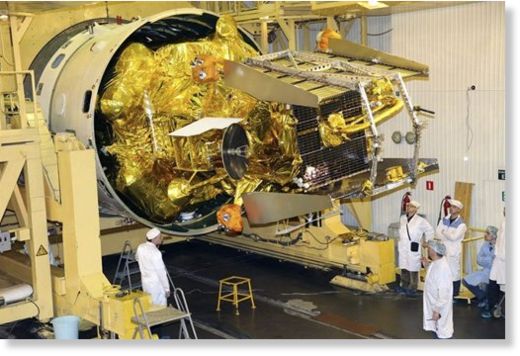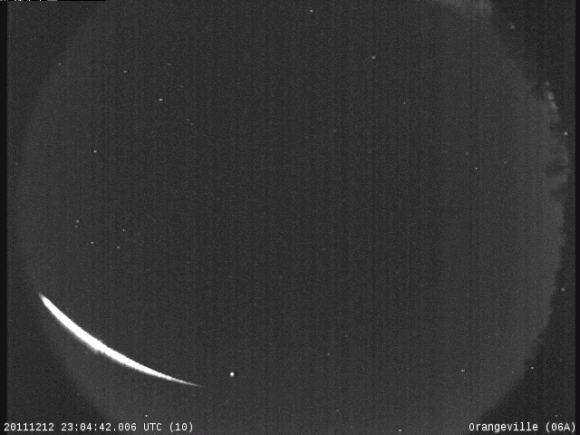
© The Associated Press/The Canadian Press/Russian Roscosmos space agency/HOIn this Nov.2, 2011 file photo distributed by Russian Roscosmos space agency shows technicians working on the Phobos-Ground probe.
A Russian spacecraft bound for a moon of Mars and stuck in Earth's orbit will come crashing back next month, but its toxic fuel and radioactive material on board will pose no danger of contamination, the Russian space agency said Friday.
Between 20 and 30 fragments of the probe with a total weight of up to 200 kilograms (440 pounds) will survive the fiery plunge and shower the Earth's surface, Roscosmos warned in a statement.
The agency said the unmanned
Phobos-Ground spacecraft will plummet to Earth between Jan. 6 and Jan. 19, and the rough area of where the fragments could fall could only be calculated a few days ahead of its plunge.
As of now, it said only that the probe's fragments could rain down anywhere along a broad swath between 51.4 degrees north to 51.4 degrees south, which would include most of land surface.
While the agency had lost contact with the probe following its launch on Nov. 9, this was the first time acknowledged that the $170-million craft has been lost and will come crashing down.
Since its November launch the engineers in Russia and at the European Space Agency have attempted unsuccessfully to propel it away from Earths orbit and toward its target.



Comment: SOTT wonders what is UP with all the recent alleged man-made space objects falling out of the sky? We've gone for years and years without this repeated showering of space-junk and now, all of a sudden, in just the past year, there have been at least three, and now four raining debris down on our heads? Is it possible that it is not really man-made and these explanations are being offered to cover up the fact that the planet is already being subjected to cometary fragment bombardment? Just asking.